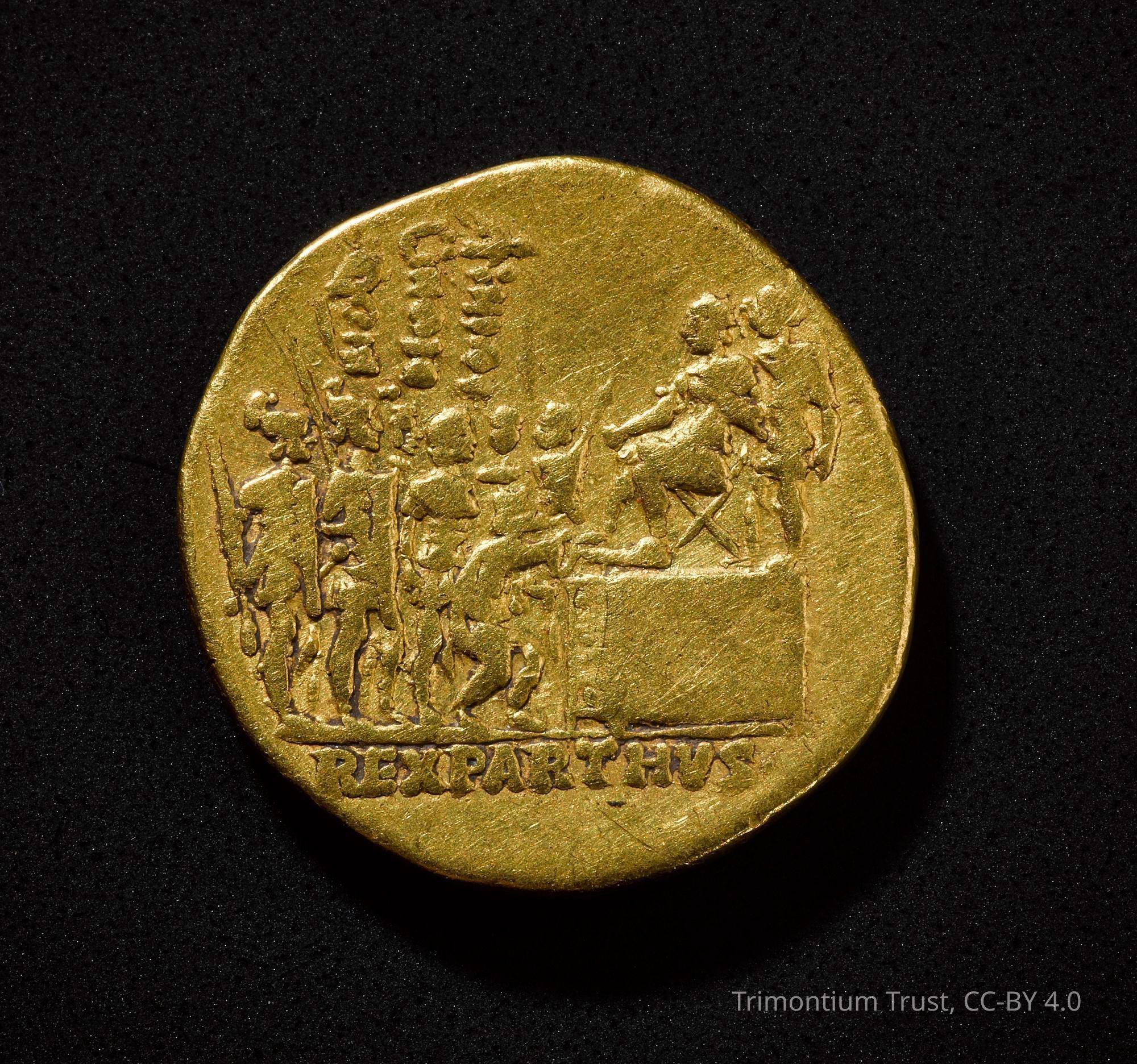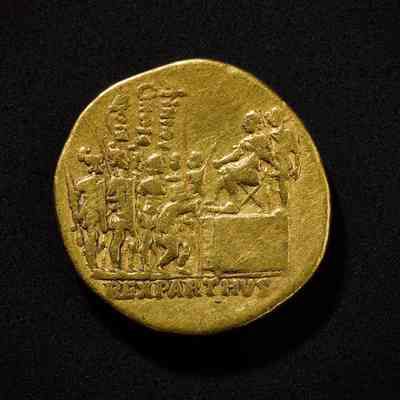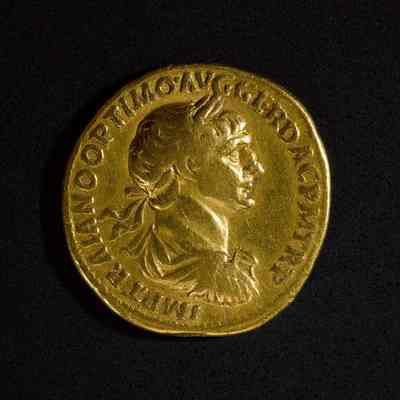Aureus of Trajan
Name/Title
Aureus of TrajanEntry/Object ID
H.C11718Description
Gold aureus of Trajan, Rome, AD 114 - 117, found at Newstead. Struck in Rome, ref number RIC 310. Bust of Trajan, laureate, draped, cuirassed, right. IMP TRAIANO OPTIMO AVG GER DAC P M TR P / Trajan seated left on platform, along with prefect and five soldiers, three are carrying standards, the King of Parthia submits to Trajan with bent knees.Use
Standard circulation coin.Context
This commemorates an event in Trajan's Parthian war when he received the submission of Parthamasiris who had claimed to be King of Armenia, an area that was contested between Rome and Parthia. The Romans saw this as the acceptance by the Parthians of Rome's superiority; Trajan went on to wage a military campaign against them. Trajan (born September 15?, AD 53, Italica, Baetica [now in Spain] - died August 8/9, AD 117, Selinus, Cilicia [now in Turkey]) was a Roman emperor (AD 98–117) who sought to extend the boundaries of the empire to the east (notably in Dacia, Arabia, Armenia, and Mesopotamia), undertook a vast building program, and enlarged social welfare.Collection
National Museums ScotlandCategory
Coin
Numismatics
Acquisition
Accession
H.C11718Source (if not Accessioned)
National Museums ScotlandMintage
Mint
RomeTime Period
2nd centuryPlace of Origin
* Untyped Place of Origin
RomeCoin Details
Obverse
Description
IMP TRAIANO OPTIMO AVG GER DAC P M TR P; laureate draped cuirassed bust rightTranscription
Imperator Traiano Optimo Augustus, Germanicus, Dacicus, Pontifex Maximus, Tribunicia Potestate.Translation
Supreme commander (Imperator), of Trajan, the best emperor (Augustus), conqueror of the Germans, conqueror of the Dacians, high priest, holder of tribunician power.Reverse
Description
REX PARTHVS in exergue; Trajan laureate and in military uniform, seated left on platform -camp bench set on daïs- , attended by prefect - behind, standing left-, receiving Parthamasiris with bent knees; 5 soldiers standing around king, holding shields, spears and, 3 carrying legionary standards. Calicó 1082, Cohen 329v.Transcription
REX PARTHVSTranslation
King of ParthiaEdge
Edge Type
Plain/SmoothEthnography
Cultural Region
Continent
EuropeCulture/Tribe
Roman


